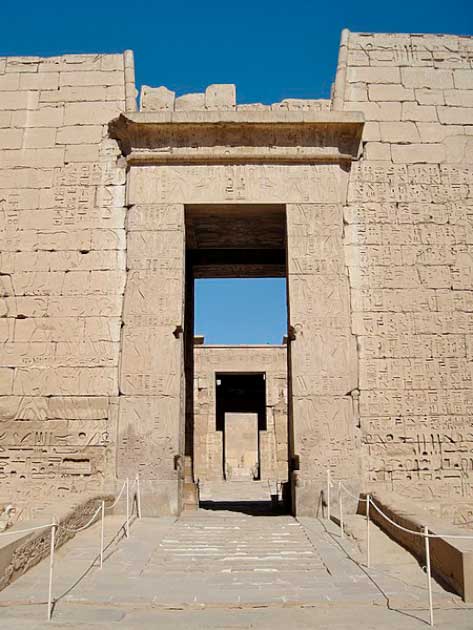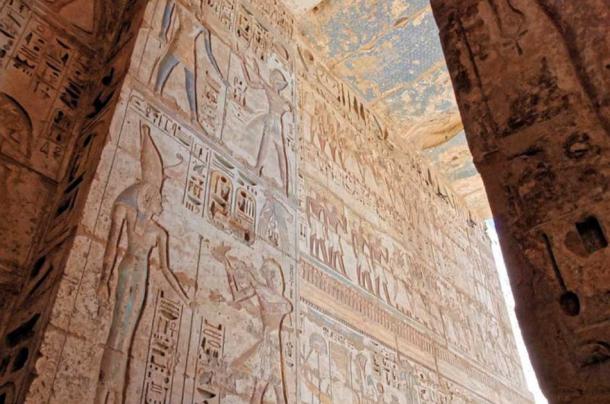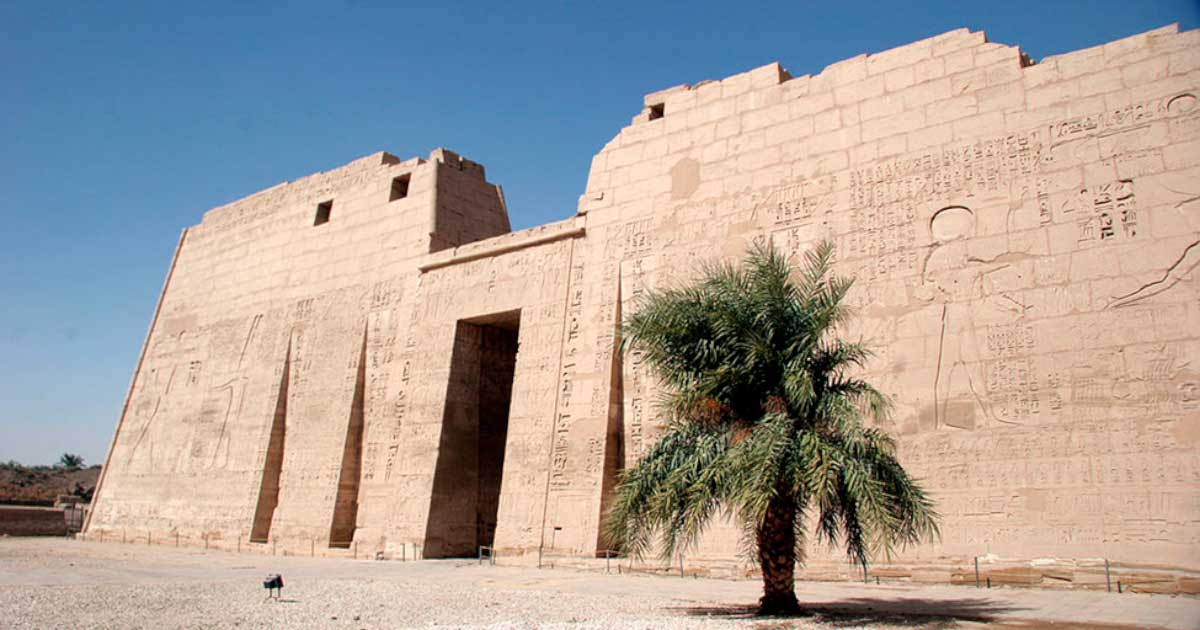The Majestic Medinet Habu and the Mortuary Temple of Ramesses III
Usermaatre Meryamun Ramesses III was one of the last great Ancient Egyptian pharaohs of the New Kingdom period. The second ruler of the Twentieth Dynasty, Ramesses III was a notable warrior pharaoh, who had to defend his realm against numerous new invaders. His was a rule of struggle, and Ancient Egypt slowly declined in power, pressured from all sides. But even so, this powerful pharaoh earned himself a dignified burial. He was actually buried in the Valley of the Kings, but also had a lavish and extravagant mortuary temple built for him in Thebes, at the place known today as Medinet Habu.
A Mortuary Temple at Medinet Habu, Worthy of a Pharaoh
Thebes, known in modern times as Luxor, was one of the most important towns of Ancient Egypt. Opposite it, on the west bank of the Nile River, is Medinet Habu, an archaeological site at the foot of the Theban hills. The whole of the locality is dominated and connected almost exclusively to the lavish mortuary temple of the Ancient Egyptian pharaoh Ramesses III. It is not the only extant building at Medinet Habu, of course. There are also some badly preserved remnants of preceding temples of Ay and Horemheb, as well as the Temple of Amun, built by Thutmose III.
And yet, there is no doubt that the mortuary temple of Ramesses III is the dominant building at the site. It towers above the surrounding plains, leaving every onlooker in awe - as was its original intention. It was meant to convey the power and the prestige of the pharaoh, even after he was long gone from the mortal world.
Attempts at visual reconstruction were made, in order to convey that grandeur in our times as well. But sadly, the centuries were not kind towards Medinet Habu. The vast temple is now in ruins, but a good degree of preservation is still there. Many valuable inscriptions, carvings, and scenes are preserved, all of them presenting in detail the life of Ramesses III and his times.
- The Battle of the Delta: Ramses III saves Egypt from the People of the Sea
- Hidden in the Hieroglyphs: Is Ancient Egyptian a Lost Language?

Gate between the first and second courtyard in the mortuary temple of Ramses III. in Medinet Habu, Egypt. (Olaf Taush/CC BY 3.0)
Grandeur in Life and Death
Ramesses III did not spare any money when building this vast temple. He wanted his might to be shown to all. In many ways, he took after his ancestor, Ramesses II - one of Egypt’s most powerful rulers, who also built a vast mortuary temple for himself, known as the Ramesseum. Medinet Habu is, however, somewhat smaller. It is around 150 m (490 ft) long, and follows the general pattern of all similar pharaonic mortuary temples. But that is only the beginning of the awe-inspiring grandeur one can see and experience here.
The precincts of the temple, i.e., its surroundings, measure around 210 m (690 ft). by 300 m (1,000 ft) and contain more than 7,000 m2 (75,347 sq ft) decorated wall relief. That is a staggering number, and shows the lengths to which ancient Egyptians went in order to present their beliefs and history - carved into stone. One can literally spend hours walking around the temple grounds, observing the tales and legends depicted on its walls.
This mortuary temple is further surrounded by massive mudbrick walls, which indicate that it might have been fortified at one point in its history. This could have been a protection against looters, as the temple would have been stocked with many fine riches. Grave robbing was a big issue in Ancient Egypt. But perhaps we have to be thankful for this protection, as it helped preserve this important archaeological site for posterity.
Medinet Habu was important for understanding the invasions of the Sea Peoples, which Ramesses III fought. Scenes from that war are depicted on the temple walls.
- Top Ten Ancient Egyptian Discoveries of 2014
- Analyzing Mummy Genes: Were Ancient Egyptians closely Related to Middle Easterners?

Inside the Mortuary temple Medinet Habu. (Dezlab/Pixabay)
A Wealth of Majestic Reliefs
One of the most valuable features of this temple is the wealth of carved reliefs. Every wall and pillar, every possible nook and cranny bears a relief or an inscription. There are entire walls covered with historic scenes: the pharaoh’s war with the Libyans; scenes from the war with the Sea Peoples; depictions of the Amorite War; depictions of Ramesses III in his regnal duties; gods and goddesses; and scenes of daily life in Ancient Egypt.
Another important discovery at Medinet Habu is the so-called “minor King list” - a special carved relief of the pharaoh’s celebration of the Festival of Min. There, in a special procession are listed the names of many predecessor pharaohs, including Merenptah, Seti II, Horemheb, Amenhotep III, and others. This was valuable for historians, allowing them to better portray the picture of Egypt of this period.
In every regard, the mortuary temple at Medinet Habu is fascinating and inspiring. Even now, thousands of years later, in a ruined state, it can leave any spectator breathless. We can only imagine how majestic it appeared when first built, with its lofty hypostyle halls, chapels and chambers, and all the statues and deposited riches.
And what is even more fascinating is the fact that the area surrounding Thebes is full of even grander buildings and temples, as well as illustrious tombs of the nobles. It only goes to show how great an emphasis did Ancient Egyptians place on the afterlife, and the reverence of their dead pharaohs.
Top image: Mortuary Temple of Ramesses III. Source: Asta/Public Domain
References
David. 2023. Medinet Habu Temple (Madinat) In Luxor, Egypt. The World Travel Guy. [Online] Available at: https://theworldtravelguy.com/medinet-habu-temple-madinat-in-luxor-egypt/
Monderson, F. 2009. Medinet Habu: Mortuary Temple of Ramses III. Author House.
Redford, D. B. 2018. The Medinet Habu Records of the Foreign Wars of Ramesses III. BRILL.



















